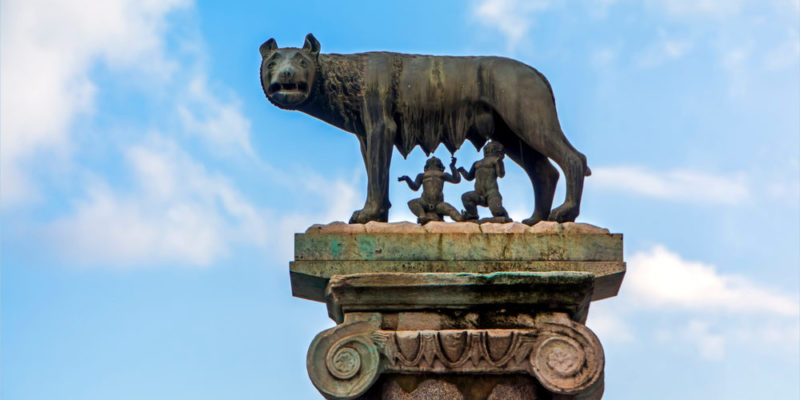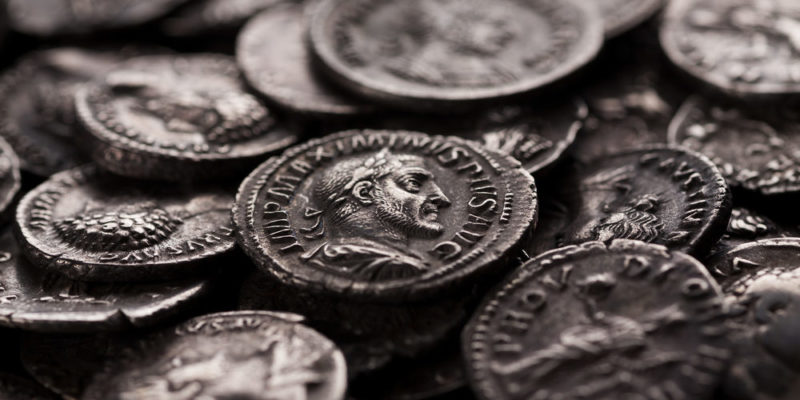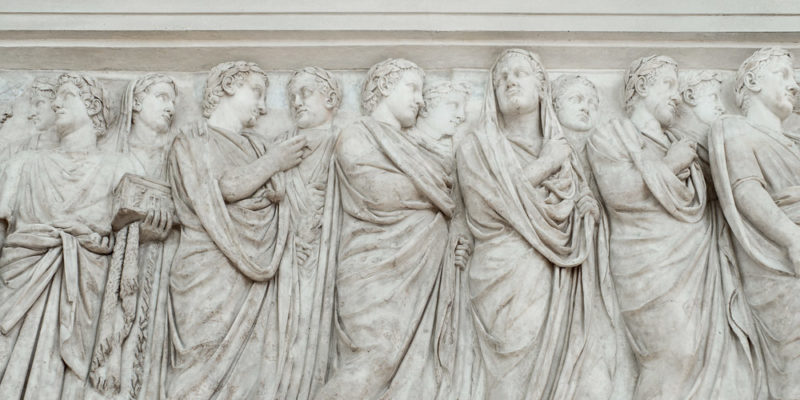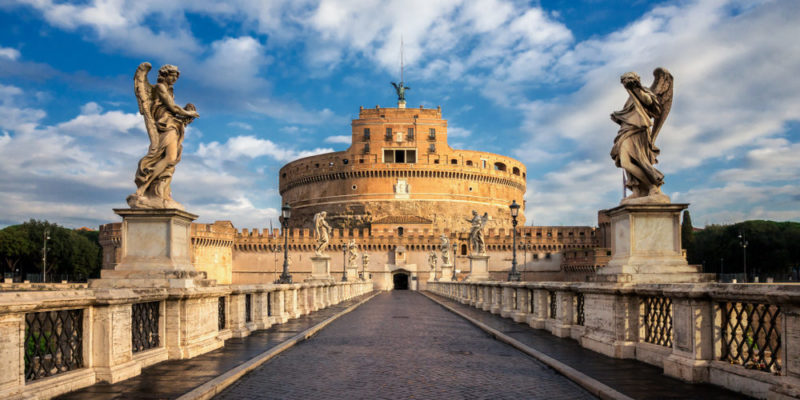We explain what the Roman civilization was and what its history was like. In addition, the stages into which it is divided and its general characteristics.
Roman civilization
Roman civilization arose in 753 BC as a small community near the commercial passage of the Tiber River (from present-day Italy). Rome became one of the most successful imperial powers in history.
The Roman government was characterized by a strong military spirit, which justifies its incessant warlike activity. However, it managed to become a powerhouse due to its strategic ability to establish alliances.
Unlike the Greeks who excluded foreigners and subdued the conquered peoples, Rome incorporated them into its political-social system and granted them Roman citizenship.
Origin of Roman civilization

Roman civilization arose after a period of hundreds of years. In the 8th century, Rome was a place of passage and its first settlers came from the Alban and Sabine mountains. The Etruscan neighbors took power for several years until they were overthrown by the Romans who consecrated themselves by forming the Republic of Rome. They continued to expand their power in the region until eventually becoming an Empire.
According to legend, Rome was founded by the twins Romulus and Remus in 753 BC. They were abandoned by their father, in a basket in the Tiber river, but a wolf rescued them. In adulthood, the brothers were about to find a new city, but it was then that they fought. Romulus killed Remus and became the first king of the region. He named it "Roma" in honor of his name.
A series of kings of Sabine, Latin, and Etruscan origin (they make up the Italian civilizations before the Romans) followed the succession for the position of king, without respecting the inheritance of the lineage, but were elected by a Senate.
Form of government in Rome
Historians recognize three stages in the development of the Roman government. The time of the Republic of Rome was one of the most significant periods in the history of civilization, which managed to establish it as a dominant power and, later, to consolidate itself as a Roman Empire. The three stages of according to their type of government were:
- The monarchy (from the 8th century BC to the 6th century BC). It was a period of great Etruscan influence, from which arose the new Roman State and a political system that gave way to the Republic. During this period the Roman kings and the Etruscans exercised power.
- The republic (from the 6th century BC to the 1st century AD). Expansion began accompanied by a period of great struggles and conquests, such as the Punic wars that took place in Rome and Carthage (between 264 BC and 146 BC). Rome triumphed in the last battle and became the first power in the Mediterranean under the leadership of Julius Caesar (whom many called dictator ). With the death of Julius Caesar, a fight began to take command of Rome between Marco Antonio and Octavio (Julius Caesar's nephew), who triumphed and started the Roman Empire.
- Empire (from the 1st century AD to the 5th century AD). It was the period characterized by an autocratic government (power rested with a single person ), whose decisions were not subject to laws or mechanisms that regulate it. Augustus was the first emperor of Rome to rule and proclaim himself each year of his tenure. He managed to establish some internal peace but suffered constant border confrontations. However, he managed to expand the empire to neighboring regions. After his death in 14 AD, the Senate granted him the recognition of divinity (apotheosis) and he was succeeded by Tiberius, his stepson.
Roman economy

The economy of the Roman civilization was established as a system of communal trade and exchange. All types of commercial goods and agricultural products, livestock, and various services were used as a medium of exchange.
Agricultural activity, the exploitation of slaves, and commerce were the main productive sources. Agriculture required the labor of a large number of slaves to produce on any scale.
Farmers could donate surplus crops to the government instead of paying public taxes. These consisted of modest appraisals applied to land, home, other assets, slaves, animals, personal items, and monetary wealth.
A key factor in advancing the Roman Empire with its conquests was ensuring that the provinces produce grain. Egypt, Sicily, and Tunisia were the main productive regions that sent the grains to Rome, and then, from the port on the Tiber River, they were distributed throughout the empire.
The trade of goods was made in exchange for barter for other goods or through a system of coins of brass, bronze, copper, silver, and gold, minted under strict rules of weights, sizes, and values. Roman coins were popular and could be found in various parts of the region, including India.
Roman society

The company Roman was divided into 2 large very distinct groups:
- The patricians or free men. They enjoyed the full enjoyment of their rights, participated in the Senate, and held high political and military positions.
- Commoners or men without freedom. They were deprived of political rights and involved both smallholders, peasants, merchants, and artisans, as well as slaves.
Roman architecture
The architecture Roman of the time of the Republic was one of the great contributions to subsequent cultures. Although this civilization built more civil than religious buildings, engineering works such as aqueducts, bridges, hot springs, causeways, arches, and commemorative columns stood out. The Roman Coliseum was one of the most majestic constructions of antiquity (the work began in 71 BC).Roman aqueducts made it possible to supply water to urban areas. The cement and concrete that they used in most of their constructions are the reason why, even today, some buildings are preserved (such as the Colosseum and the Roman Forum). The Roman arches (which were used in the construction of bridges and large buildings), were an important advance in the infrastructure because they allowed the weight of the rest of the structure to be distributed evenly.
Roman religion
 Roman religion was polytheistic and played a very important role in the daily life of the Romans. They worshiped deities who were protectors of the homes they called lares. During the Roman Empire, a large number of temples have been built to worship the different gods. In addition, each family home also had a small altar and a shrine to worship the "lares." The most important god was Jupiter, king of the gods who, together with his wife Juno, the goddess of heaven, ruled the rest of the deities, such as:
Roman religion was polytheistic and played a very important role in the daily life of the Romans. They worshiped deities who were protectors of the homes they called lares. During the Roman Empire, a large number of temples have been built to worship the different gods. In addition, each family home also had a small altar and a shrine to worship the "lares." The most important god was Jupiter, king of the gods who, together with his wife Juno, the goddess of heaven, ruled the rest of the deities, such as:
- Mars. God of War
- Mercury. Messenger of the gods
- Neptune. God of the sea
- Diana. Goddess of the hunt
- Vesta. Goddess of home
- Minerva. Goddess of healing and wisdom
- Venus. Goddess of love
The above content published at Collaborative Research Group is for informational and educational purposes only and has been developed by referring to reliable sources and recommendations from technology experts. We do not have any contact with official entities nor do we intend to replace the information that they emit.
Cultural journalist with great interest in education and technological innovation in the classroom. The future passes through technology and it is already here. .
Leave a reply
Your email address will not be published. Required fields are marked *Recent post

Sport: What Is It, Types, Risks, Features, Characteristics and Examples

Dogs: Emergence, Features, Characteristics, Feeding and Breeds

Story: Definition, Elements, Structure, Features and Characteristics

